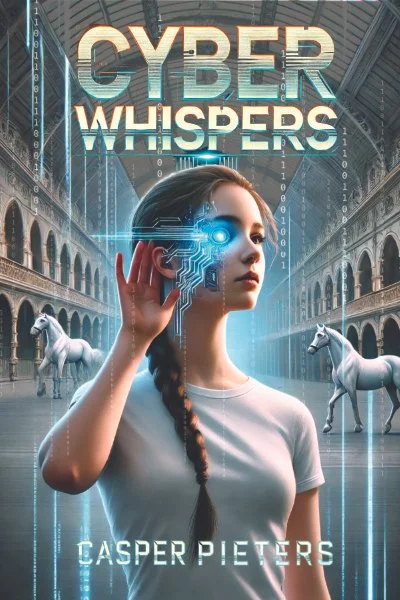Cyber Whispers: Teaching Media Literacy Through Story and Adventure
How do you teach young learners that what they see online isn’t always the truth—and that what they share has real consequences?
Facts, fiction, rumors, memes, “likes,” and “shares”—all swirl together in the digital spaces where our children grow up. For them, navigating this landscape isn’t just a skill, it’s a survival tool. That’s exactly where Cyber Whispers and its Education Guide step in (both come out in November).
Learning Through Story: What Is Cyber Whispers?
Cyber Whispers is a thrilling 2nd adventure novel for middle-grade and teen readers in the Team Savv-i series. But it’s also something more—it’s edufiction. That means it blends page-turning narrative with embedded opportunities to learn critical skills.
Through the journeys of Beam, Bindi, Mia, Chi, and Rob, young readers don’t just read about issues like online rumors, data privacy, and digital identity—they experience them alongside the characters.
The Education Guide extends this by offering chapter-by-chapter discussion prompts, activities, and cross-curricular links designed for classrooms, libraries, or home learning.
Why Media Literacy Matters
Children today don’t just consume information—they create it, remix it, and share it. Understanding:
How stories are created (whether fact or fiction)
Why messages spread online (attention, persuasion, manipulation)
Who benefits or gets harmed when stories go viral
…equips young people to use social media truthfully and to resist contributing to the “online pollution” of misinformation, cyberbullying, and digital noise.
In Cyber Whispers, the characters see firsthand how online rumors and manipulative messages can damage trust, identity, and reputation—mirroring the real-world risks our young people face every day.
Example in Action: Chapter 1 – The Call Out
The very first chapter sets the stage with urgency and ambiguity. The team receives a mysterious summons—“Team Savv-i now 🚀”—but with no sender, no timestamp, and no explanation.
The story thrusts young readers into the exact same questions they should be asking in their own online lives:
Can I trust this message?
Who is the sender?
What are the risks if I act without thinking?
The accompanying Education Guide provides ready-to-go tools for educators:
Discussion Questions
If you got a message with no sender, what would you do before following it?
How would you feel if your digital identity was stored in one place—and how would you protect it?
Activity: The Blue-Light Drill
Learners design and roleplay a Go/No-Go Protocol for handling ambiguous tech prompts. In just 40 minutes, they build verification habits, practice collaboration under time pressure, and reflect on impulse vs. caution.
Adaptations are provided for diverse learners—visual icons for younger students, flexible pacing for ADHD learners, and sentence starters for ESL students. The activity even extends into drama, civics, statistics, and health—showing how media literacy connects across the curriculum.
Why This Approach Works
Instead of abstract warnings about “fake news,” Cyber Whispers invites learners into an immersive experience. They feel what it’s like to face a reputation-damaging rumor, or to be pressured into acting on an unverified message.
That emotional connection makes the lessons stick. Students don’t just learn to discern truth from fiction—they understand how and why stories are created, and the responsibility they have when sharing them.
By journeying with the characters, they practice:
Critical thinking
Digital identity protection
Emotional regulation under online pressure
Responsible social media use
In a world where online whispers can become tidal waves, helping young learners build strong media literacy is one of the most important gifts we can give them.
Cyber Whispers shows them that the digital world isn’t just something to consume—it’s something they shape with every click, comment, and share.
Want to explore more? Pre-order Cyber Whispers and its Education Guide and bring these ready-to-use media literacy lessons into your classroom, library, or homeschool today.

